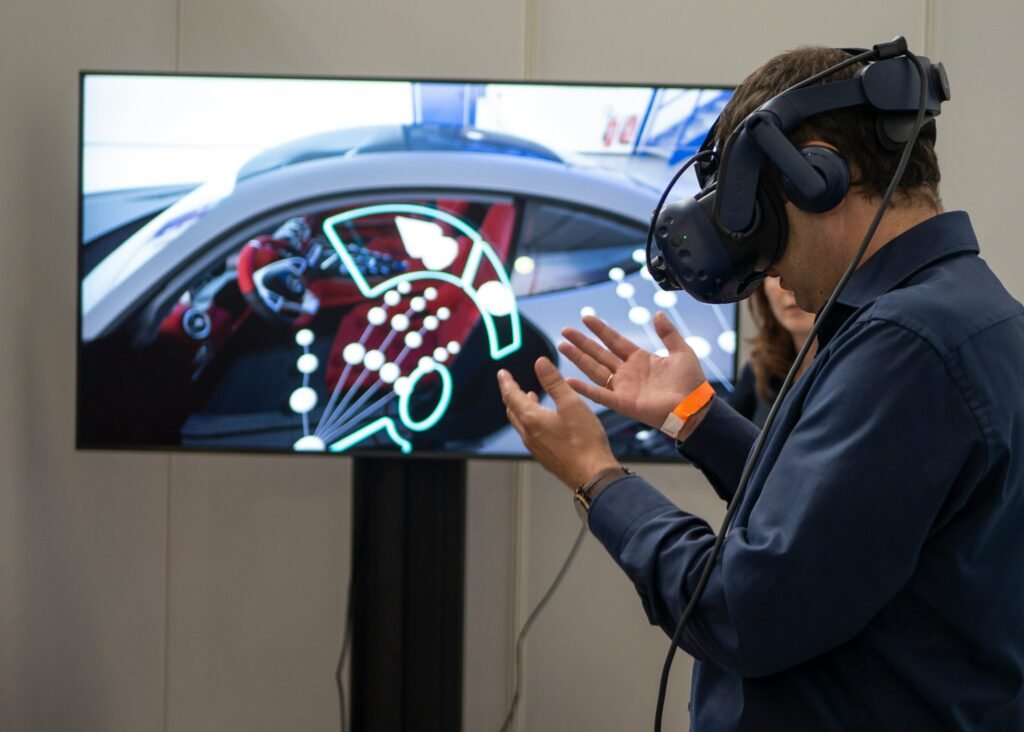
Understanding the Basics: What is XR and VR?
Extended Reality (XR) and Virtual Reality (VR) are transformative fields within the realm of digital technologies. XR is an umbrella term that encapsulates various immersive technologies, including VR, Augmented Reality (AR), and Mixed Reality (MR). To grasp the essence of XR, it is essential to understand its components.
Virtual Reality refers to a fully immersive, computer-generated environment that allows users to experience and interact with a different reality. This is typically achieved through VR headsets, which transport the user to a virtual world, disengaging them from the physical surroundings. In contrast, Augmented Reality overlays digital information onto the real world, enhancing the physical environment with virtual elements visible through devices like smartphones or AR glasses. Mixed Reality takes this further by blending the real and digital worlds, enabling interactions with both environments simultaneously.
The evolution of these technologies dates back several decades. The concept of VR was first introduced in science fiction literature, but it materialized in the late 20th century with early VR headsets and simulators. AR found its roots in military and industrial applications before gaining popularity in consumer electronics. MR emerged more recently as a sophisticated combination of VR and AR, utilizing advanced sensors and computing power.
The unique characteristics of VR, AR, and MR lend themselves to numerous applications across various industries. In gaming, VR offers an immersive experience, transporting players into fantastical realms. In education, AR supplements traditional learning methods with interactive, visual content, enhancing comprehension and engagement. Healthcare professionals leverage MR for complex surgeries and training simulations, providing a blended environment to practice with higher precision and safety. Retailers use AR to offer customers virtual try-ons, enhancing the shopping experience and decision-making process.
These technologies are increasingly converging, leading to the rise of XR as a versatile and inclusive term. XR encapsulates the advancements and amalgamations of VR, AR, and MR, pushing the boundaries of how we perceive and interact with digital content in diverse, real-world applications. As XR continues to develop, its potential for transforming various sectors becomes ever more apparent, setting the stage for future innovations and integrations.
Current Trends and Future Prospects in XR and VR
Extended Reality (XR) and Virtual Reality (VR) technologies are undergoing rapid advancements, marked by notable innovations in both hardware and software. One of the most significant hardware developments in recent times is the advent of next-generation headsets, which offer enhanced resolution, wider field of view, and reduced latency, delivering more lifelike visuals and immersive experiences. Additionally, haptic feedback devices are evolving, allowing users to feel physical sensations, thereby creating an unprecedented level of interactivity in virtual environments.
On the software side, advancements are focusing on creating more immersive and interactive experiences. With the integration of Artificial Intelligence (AI), XR and VR applications can now offer personalized content and adaptive environments that respond to user actions in real-time. Another burgeoning trend is spatial computing, which combines digital and physical worlds seamlessly, enabling applications to understand and interact with the physical space around them.
Emerging technologies such as 5G connectivity and cloud-based XR solutions are also playing a crucial role in enhancing the capabilities of XR and VR. The high-speed, low-latency nature of 5G networks is facilitating real-time data transfer, making remote XR experiences more fluid and synchronous. Furthermore, cloud-based solutions are enabling more complex and resource-intensive applications to run smoothly on less powerful hardware, democratizing access to high-quality XR and VR experiences.
Key industry players and innovative startups are at the forefront of these developments. Companies like Oculus, HTC, and Sony continue to push the boundaries with new product launches and software updates, while startups are driving niche innovations and specialized applications. Recent breakthroughs in this space have attracted substantial investments, signaling strong market belief in the future potential of these technologies.
Looking ahead, XR and VR are poised to revolutionize multiple sectors, from healthcare to education, and from entertainment to remote work. However, several challenges remain. Privacy concerns and data security are significant issues that need addressing to ensure user trust. Additionally, the need for standardized regulations is paramount to create a safe and universally accessible XR ecosystem. By overcoming these challenges, XR and VR are set to redefine our interaction with digital content and the world around us.